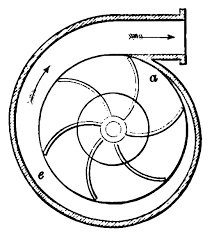Mobile:+86-311-808-126-83
Email:info@ydcastings.com
Creating Your Own Aluminum Foundry at Home for Innovative Metal Casting Projects
Creating a Homemade Aluminum Foundry A Comprehensive Guide
Aluminum casting has gained popularity among hobbyists and metalworking enthusiasts. The allure lies in its ability to transform recycled materials into useful objects, sculptures, or even practical tools. A homemade aluminum foundry is a fantastic project that combines engineering, creativity, and the rewarding experience of seeing your ideas take physical form. This guide will walk you through the essential steps to build your foundry, understand the process of melting aluminum, and discuss safety precautions for a successful and enjoyable experience.
Understanding Your Foundry
A foundry is a facility where metal is melted and cast into shapes. A homemade aluminum foundry doesn't need to be complex or expensive. The basic components include a furnace, a crucible, and a heat source. This setup allows you to melt aluminum scrap or other alloys and pour them into molds.
Materials Required
1. Furnace The furnace can be constructed from materials like fire bricks or a steel container lined with refractory cement. Purpose-designed kits are also available online, simplifying the assembly.
2. Crucible A crucible is a heat-resistant container compatible with high temperatures. Common materials include graphite or silicon carbide.
3. Heat Source Propane burners are popular due to their efficient heating capability. Alternatively, you can use charcoal or an electric furnace.
4. Molds Create molds from sand, clay, or metal. For beginners, sand molds are recommended, as they are easier to use and can be customized easily.
5. Safety Gear This includes gloves, goggles, face shields, aprons, and sturdy boots to protect against molten metal splashes and intense heat.
Building Your Foundry
1. Construct the Furnace Start with the furnace design that suits your needs. For a simple propane furnace, use a steel drum or barrel. Insulate it by lining the interior with fire bricks and making sure there's an opening for air intake.
homemade aluminum foundry

2. Set Up the Crucible Place the crucible inside the furnace, ensuring it sits securely at the base. This is where you'll place your aluminum scrap to melt it.
3. Prepare the Heat Source Install a burner or set up your charcoal pit. If you’re using a propane burner, position it at the bottom of the furnace with proper ventilation to ensure complete combustion.
4. Create the Mold Make sure your mold is ready before you start melting. Sand molds can be easily shaped with wooden patterns, forming intricate designs that will be replicated in the aluminum cast.
The Melting Process
1. Preheat the Furnace Light your burner and allow the furnace to reach a temperature of approximately 1300°F (704°C), essential for melting aluminum.
2. Add Aluminum Once preheated, place the aluminum scrap into the crucible gently. Monitor it as it begins to melt, ensuring that it turns into a liquid state.
3. Pouring the Metal Once the aluminum is fully melted, using proper tools, carefully lift the crucible out of the furnace. Pour the molten aluminum into your prepared mold, ensuring you have adequate control to avoid spills.
Safety Precautions
Safety cannot be overemphasized when working with molten metals. Ensure you are wearing the appropriate safety gear at all times. Work in a well-ventilated area to avoid inhaling toxic fumes, and always have a fire extinguisher nearby. Be cautious with hot materials, and never attempt to work with molten metal after consuming alcohol or while fatigued.
Final Thoughts
Creating a homemade aluminum foundry offers an exciting opportunity to explore metalworking and recycling. With the right setup and precautions, you can produce unique pieces that reflect your creativity and craftsmanship. Remember, practice is key; the more you work with your foundry, the better you will become at both melting and casting aluminum. As you progress, consider experimenting with different alloys and advanced mold-making techniques. Enjoy the journey into this fascinating hobby!
-
Why Should You Invest in Superior Pump Castings for Your Equipment?NewsJun.09,2025
-
Unlock Performance Potential with Stainless Impellers and Aluminum End CapsNewsJun.09,2025
-
Revolutionize Your Machinery with Superior Cast Iron and Aluminum ComponentsNewsJun.09,2025
-
Revolutionize Fluid Dynamics with Premium Pump ComponentsNewsJun.09,2025
-
Optimizing Industrial Systems with Essential Valve ComponentsNewsJun.09,2025
-
Elevate Grid Efficiency with High-Precision Power CastingsNewsJun.09,2025











